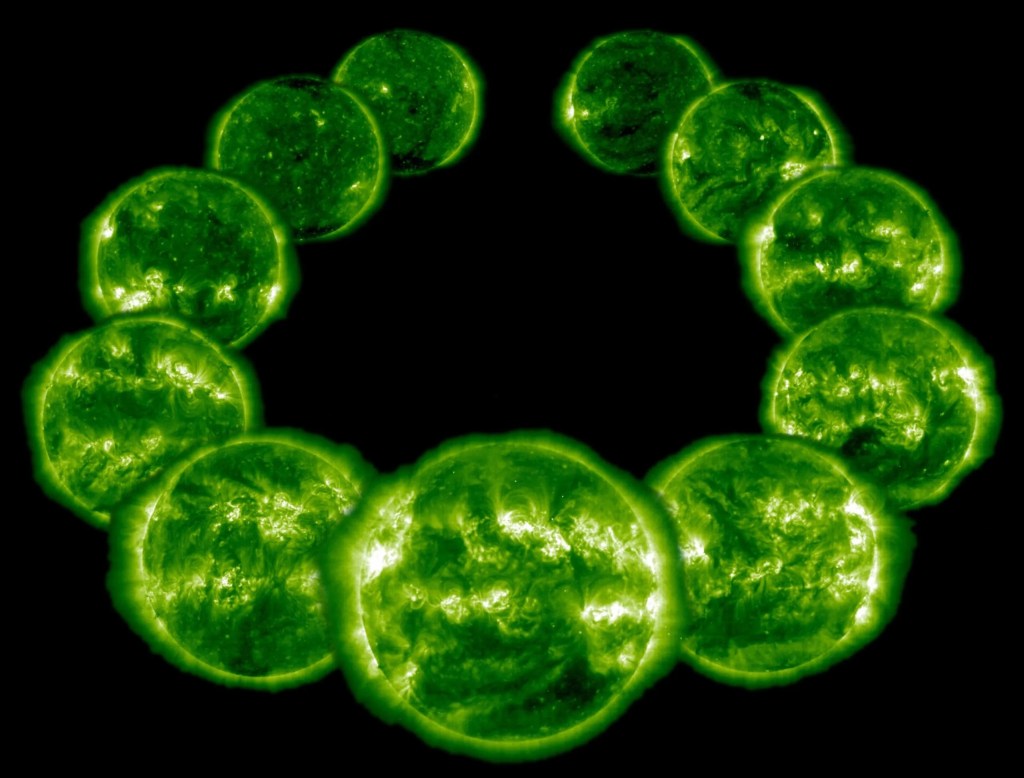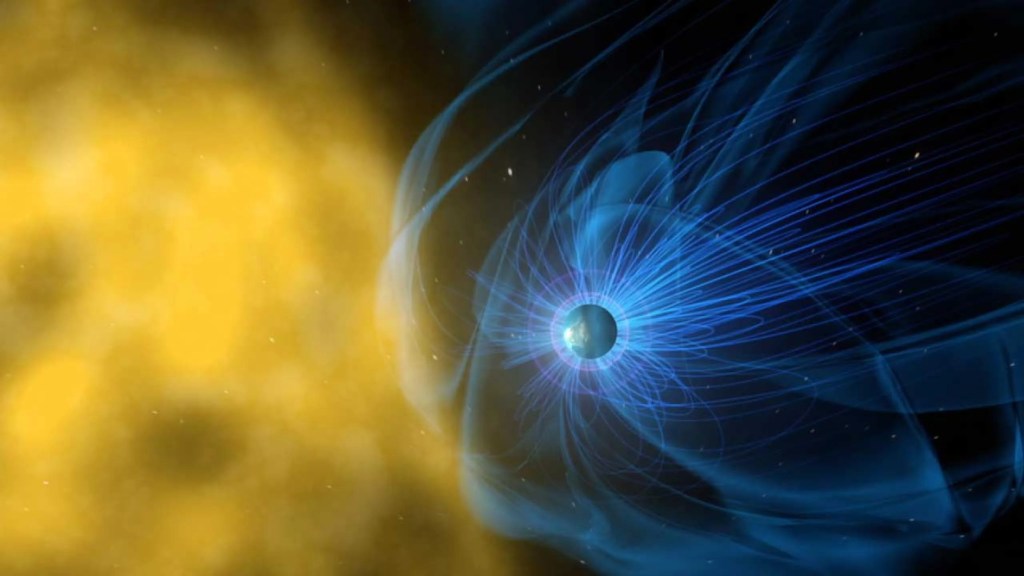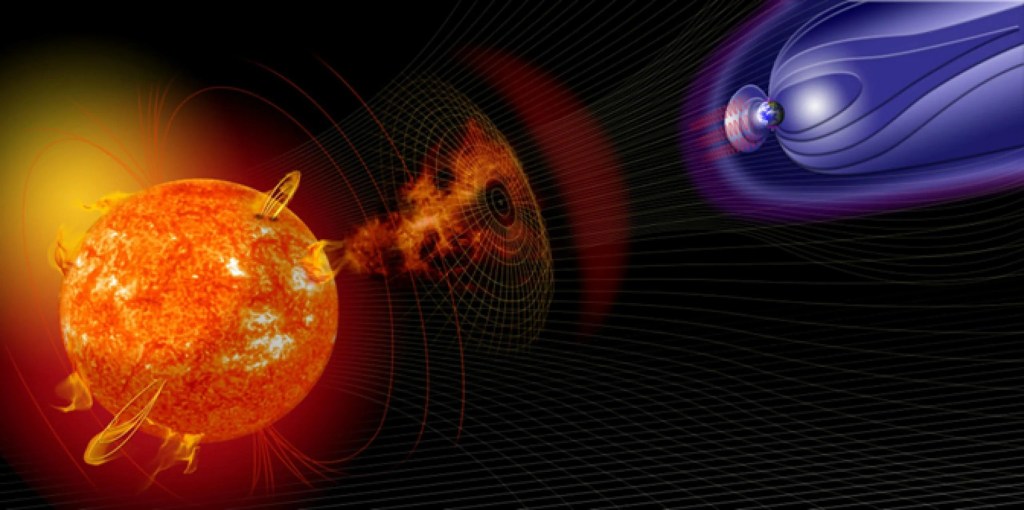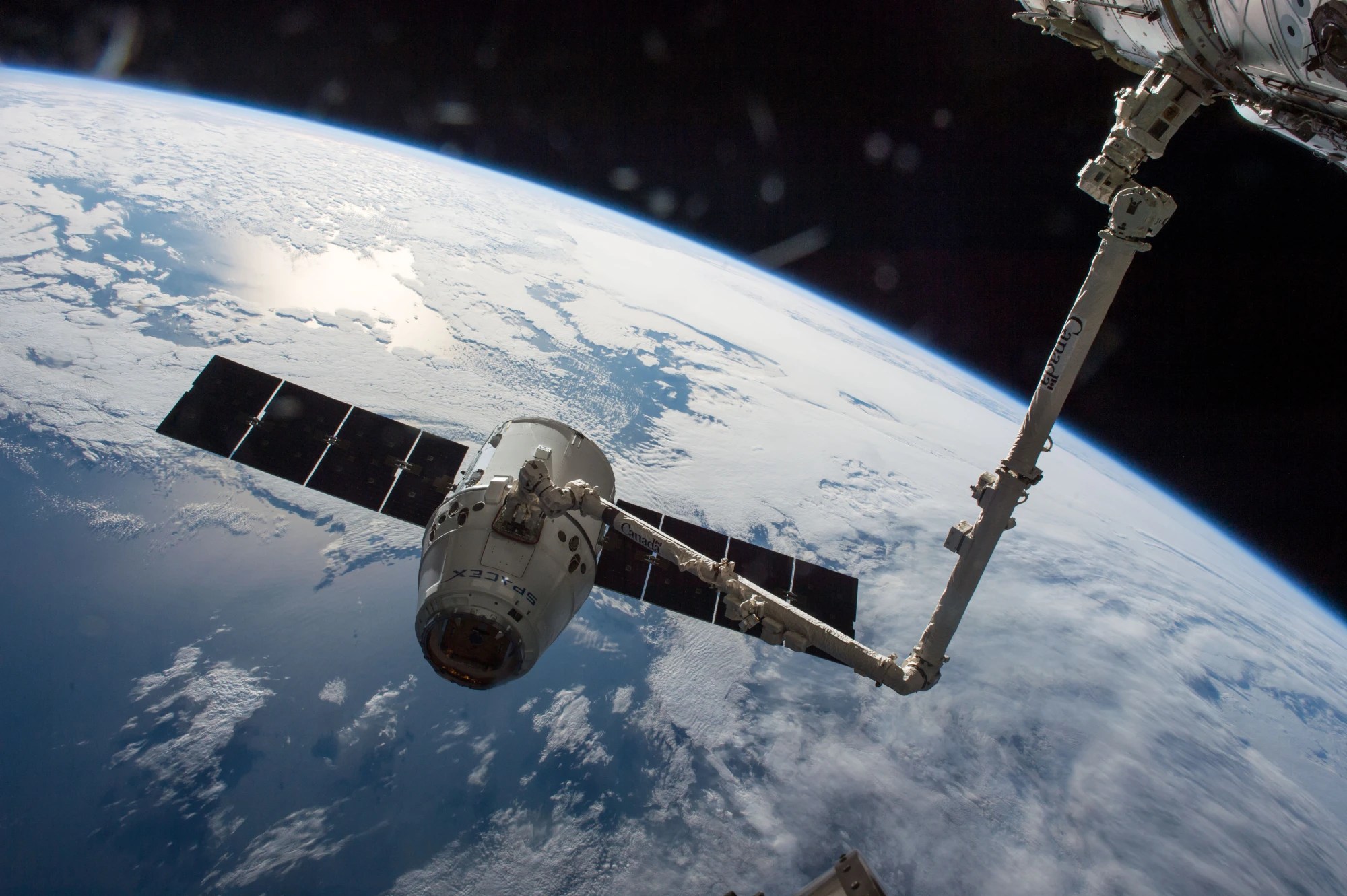Living With a Star
Earth resides in the vast atmosphere of a star – and that star creates a dynamic and complex space environment that can sometimes interfere with space technology, communications and navigation systems, and utility grids. The Living With A Star (LWS) program targets specific aspects of the Sun-Earth system that affect life and society. LWS provides a predictive understanding of the Sun-Earth system, linkages among the interconnected systems, and, specifically, space weather conditions at Earth and the interplanetary medium.
Measurements and research from LWS missions may contribute to advances in operational space weather forecasting that help prevent damage to spacecraft, communications and navigation systems, and power grids. LWS products improve our understanding of ionizing radiation, which has human health implications on the ISS and high-altitude aircraft flight, as well as operations of future space exploration with and without human presence. LWS products improve the characterization of solar radiation for global climate change, surface warming, and ozone depletion and recovery.
LWS missions have been formulated to answer specific science questions about the links between the various solar, Earth and space systems that affect space weather. The coordinated LWS program includes strategic missions, targeted research and technology development, a space environment test bed flight opportunity, and partnerships with other agencies and nations.
Living With a Star Objectives
Living With a Star is a cross-disciplinary program with links to the following:
- Space Science: LWS quantifies the physics, dynamics, and behavior of the sun-Earth system over the 11-year solar cycle.
- Earth Science: LWS improves understanding of the effects of solar variability and disturbances on terrestrial climate change.
- Human Exploration and Development: LWS provides data and scientific understanding required for advanced warning of energetic particle events that affect the safety of humans.
- Aeronautics and Space Transportation: LWS provides detailed characterization of radiation environments useful in the design of more reliable electronic components for air and space transportation systems.
LWS Architecture Committee Report
The LWS Architecture Committee was a committee of experts from the heliophysics science community. The committee was formed at the request of NASA’s Heliophysics Division to (1) assess the current LWS mission line and (2) recommend a future mission architecture designed to further the goals of the LWS program. The LWS Architecture Committee report was delivered to NASA in August 2022.
Further Information
- LWS Targeted Research and Technology Science Definition Team Report
- LWS 10-Year Vision and Beyond
- LWS Revised Strategic Science Areas
- The National Research Council Decadal Survey Report Solar and Space Physics: A Science for a Technological Society
Related Programs
Active Missions supporting LWS:
- Parker Solar Probe: launched in 2018, Parker is unlocking the mysteries of the Sun's atmosphere. Parker Solar Probe will fly through the solar corona 24 times, gradually lowering its orbit closer to the Sun using Venus' gravity during seven flybys over its seven-year mission
- Solar Dynamics Observatory: Launched in 2010, the SDO seeks to understand the Sun’s influence on Earth and near Earth space by simultaneously studying the solar atmosphere on small scales of space and time and in many wavelengths.
- Solar Orbiter: Launched in 2020, Solar Orbiter is an international cooperative mission between ESA (the European Space Agency) and NASA that will capture the first ever images of the Sun’s north and south poles from high latitudes. At its fastest, Solar Orbiter can almost catch up to the Sun’s rate of rotation, allowing the spacecraft to hover over specific spots on the Sun as it turns and study how a single solar feature evolves over time.
Future Missions supporting LWS:
- HERMES: HERMES will be a payload on Gateway - an outpost in lunar orbit that is part of NASA's Artemis Program. HERMES will focus on understanding the causes of space-weather variability as driven by the Sun and modulated by the magnetosphere. In doing so, it will deepen our understanding of the lunar environment and protect astronauts who visit the moon from hazardous effects of solar radiation.
- Geospace Dynamics Constellation: GDC will be the first mission to conduct a coordinated, global study of the heart of Earth’s space environment: the upper atmosphere. GDC will enhance our understanding of how the high latitude ionosphere-thermosphere system responds to variable solar wind/magnetosphere forcing; as well as how internal processes in the global ionosphere/ thermosphere system redistribute mass, momentum, and energy.
The Sun
The sun is a dynamic star, made of super-hot ionized gas called plasma.
The sun's surface and atmosphere change continually, driven by the magnetic forces generated by this constantly-moving plasma. The sun releases energy in two ways: the usual flow of light that illuminates the Earth and makes life possible; but also in more violent and dramatic ways--it gives off bursts of light, particles, and magnetic fields that can have ripple effects all the way out to the solar system's magnetic edge.

Magnetospheres
A magnetosphere is the region around a planet dominated by the planet's magnetic field.
Other planets in our solar system have magnetospheres, but Earth has the strongest one of all the rocky planets: Earth's magnetosphere is a vast, comet-shaped bubble, which has played a crucial role in our planet's habitability. Life on Earth initially developed and continues to be sustained under the protection of this magnetic environment.

Space Weather
Though space is about a thousand times emptier than even the best laboratory vacuums on Earth, it’s not completely devoid of matter.
The sun’s constant outflow of solar wind fills space with a thin and tenuous wash of particles, fields, and plasma. This solar wind, along with other solar events like giant explosions called coronal mass ejections, influences the very nature of space and can interact with the magnetic systems of Earth and other worlds. Such effects also change the radiation environment through which our spacecraft – and, one day, our astronauts headed to Mars – travel.


































